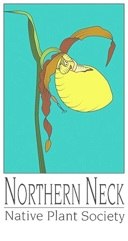Plant of the Month September 2021: Mistflower
Mistflower (or Wild or Hardy Ageratum), Conoclinium coelestinum
September 2021 Plant of the Month
Text and Photos by Betsy Washington
Mistflower, Blue Mist Flower or Hardy Ageratum, Conoclinium coelestinum, is aptly named for the soft clouds of fuzzy, lavender-blue flowers that top the plant in late summer and fall. Mistflower is a mounded and often densely branched, spreading perennial. Formerly classified in the genus Eupatorium, along with its larger cousins, the Joe-pye-weeds and Bonesets, Mistflower is much smaller, reaching only 1.5 - 3’ tall and wide. It also differs from its taller cousins in having opposite leaves that are rhomboid or triangular in shape with blunt teeth along the margins instead of having leaves in a whorl around the stem, and for the soft blue flowers unlike the soft mauve flowerheads of the Joe-pye-weeds and the white flowers of the bonesets. The lovely soft blue flowers cover the plant from late July well into fall, blooming for two months or more. The flowers consist entirely of tubular “disk” florets without the showy ray flowers of many daisies and asters. These small lavender-blue tubular florets are held in flat clusters about 1 – 3” across, with 40 – 50 disk florets in each flowerhead. The style (female reproductive part) extends beyond the corolla and is divided into 2 threadlike parts giving the flowerheads a distinctive misty or fuzzy look. In fact the soft blue flowers look much like the annual garden ageratum, and it is sometimes called hardy or wild ageratum.
Blue Mistflower is found in nearly every county in Virginia and is common in the Piedmont and Coastal Plain where it occurs in floodplain forests, moist to wet meadows, old fields, and alluvial swamps and along roadside ditches. Blue Mistflower prefers moist, humus-rich soil in full to partial sun, but is easy to grow and will prosper in a variety of garden settings. It spreads by both shallow rhizomes and by seed and can readily spread into colonies in moist soils. Its spreading habit can overwhelm a small garden or formal border, but this same habit makes it an asset where it has room to spread into colonies or form a beautiful groundcover. Mistflower is easy to divide and spread around the garden, and looks splendid planted in loose drifts along the front of a perennial border or along a path where it can lead the eye through the garden and create unity. It is a natural for growing in meadows or naturalistic plantings where its soft blue flowers compliment so many other plants. It is also perfect for planting in rain gardens or as an erosion resistant groundcover along streams, ponds or low areas where its spreading habit is an asset. If it grows too tall or floppy, merely cut it back in early summer to encourage bushy, compact plants. Mistflower is relatively deer and rabbit resistant due to the bitter foliage and has no serious pest or disease problems.
As an added bonus, the nectar-rich flowers attract a multitude of bees, butterflies, skippers, and other pollinators and bloom for two months or more from late July through October. Songbirds feed on the seeds which have silky hairs to aid dispersal by wind. As I write this, my Mistflowers are humming with no less than 10 species of butterflies and skippers feasting on the nectar and creating garden drama, along with countless native bees and pollinators!
Butterflies and pollinators love this beautiful and easy going plant and so will you!
Be sure to come to the NNNPS Fall Native Plant Sale running from Saturday Sept. 18 through Oct. 9th at Dug In Farms. Members of the Native Plant Society will be on hand to help you select the perfect plants for your garden each Saturday morning during the sale. Check out our website for more information and to view slide shows about many of our exceptionally beautiful native plants at: Northern Neck Native Plant Society (squarespace.com)

